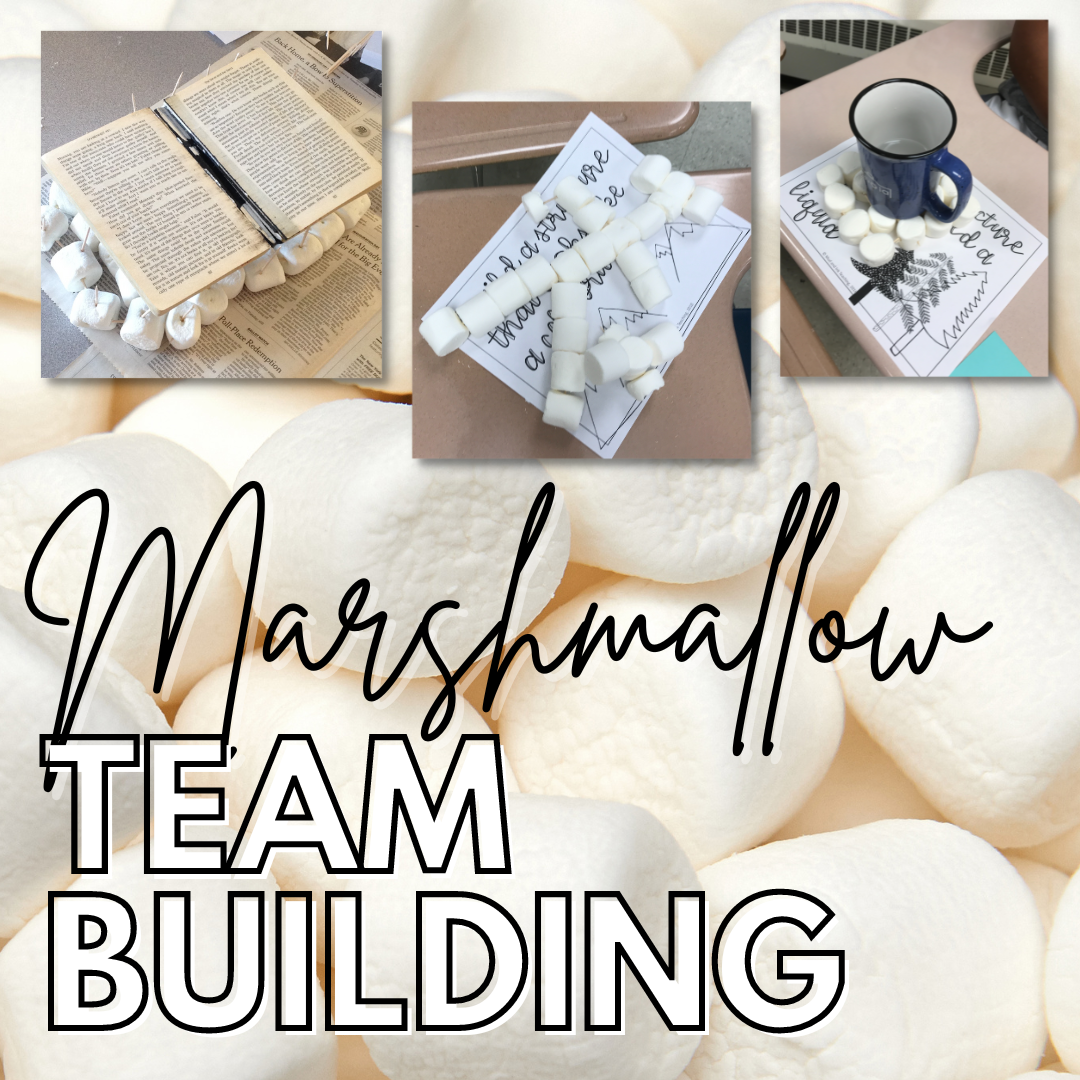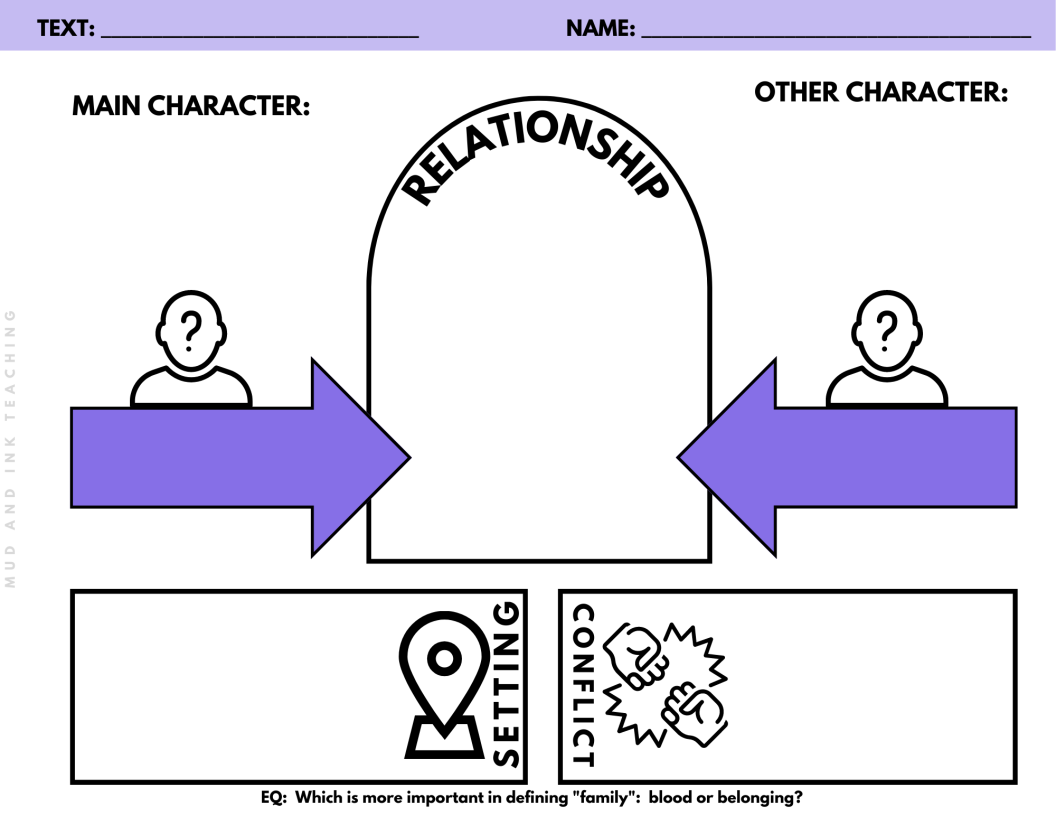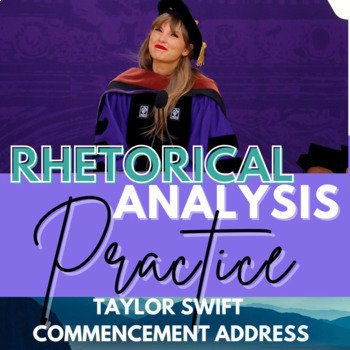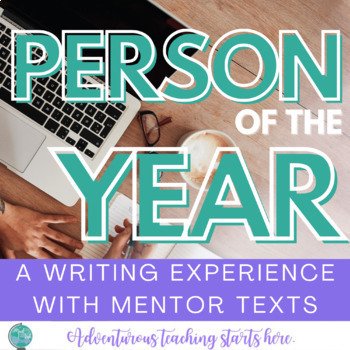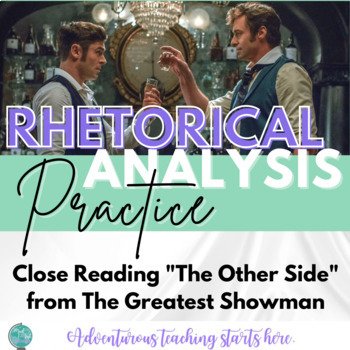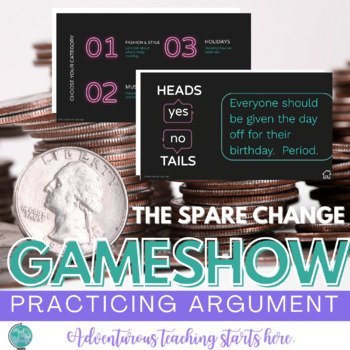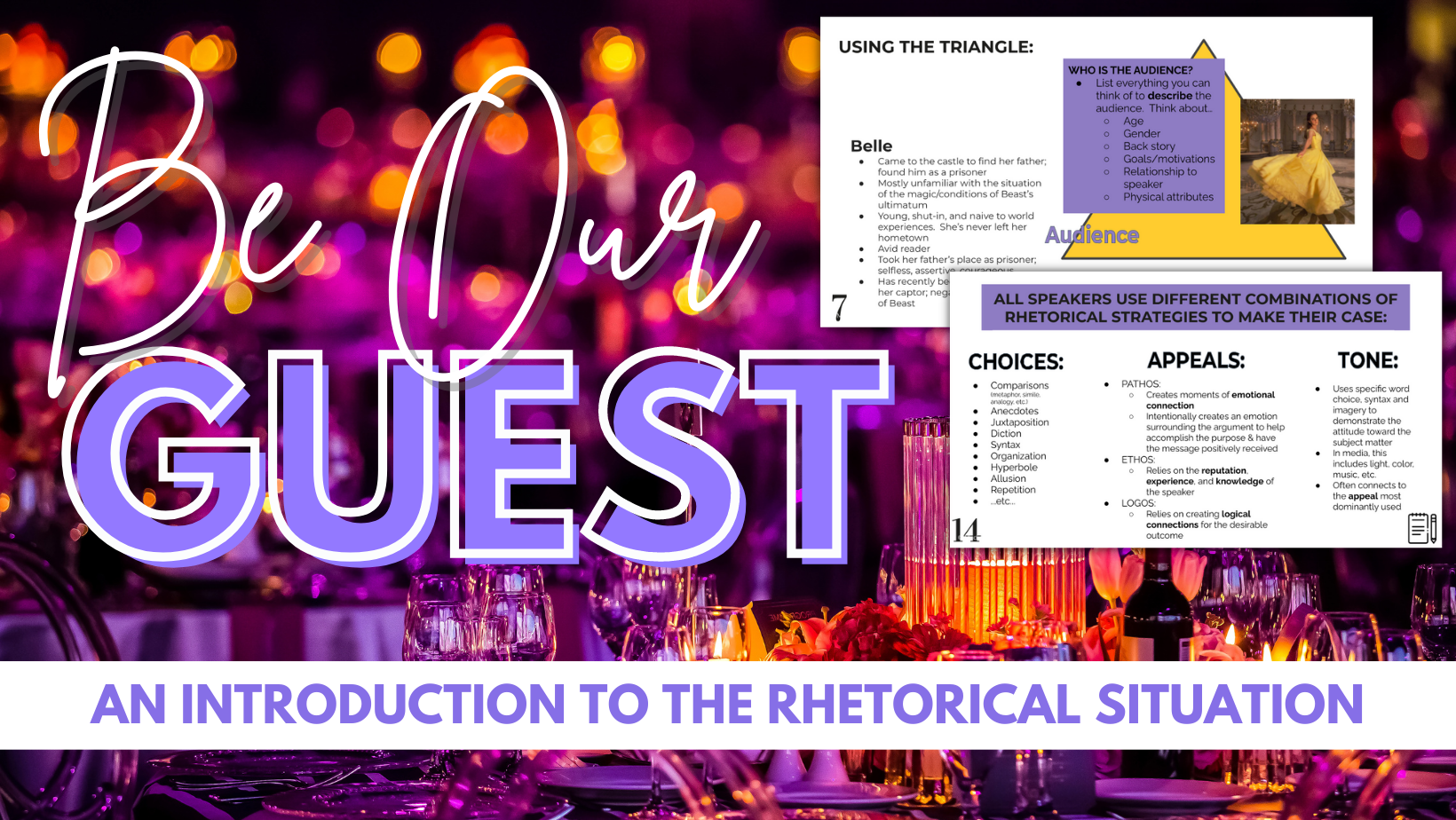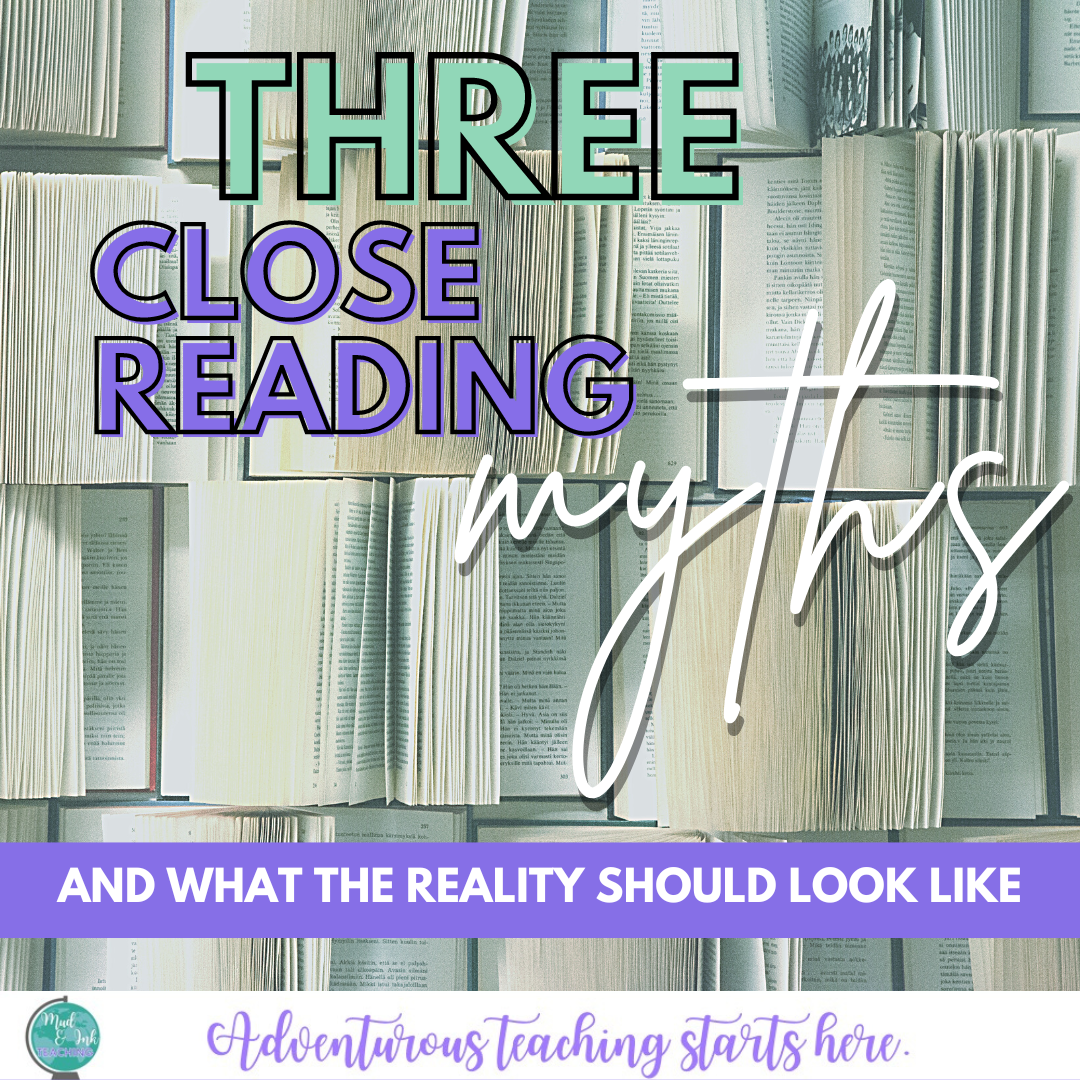
ADVENTUROUS TEACHING STARTS HERE.
5 Ways to Look at the Magic of Clarisse in your Fahrenheit 451 Unit
Now, more than ever, we need to have Fahrenheit 451 in front of our students. From the new onset of AI technology to the daily threats of our intellectual and academic freedom, Fahrenheit provides windows, mirrors, and doors into our present and our future. While Montag’s transformation, the working symbolism, and general dystopian world-building are all incredibly important pieces to focus on, I’d like to argue that it’s possible we need Clarisse McClellan the most.
Now, more than ever, we need to have Fahrenheit 451 in front of our students. From the new onset of AI technology to the daily threats of our intellectual and academic freedom, Fahrenheit provides windows, mirrors, and doors into our present and our future. While Montag’s transformation, the working symbolism, and general dystopian world-building are all incredibly important pieces to focus on, I’d like to argue that it’s possible we need Clarisse McClellan the most.
Clarisse.
The enigma.
The one character my students always feel collective sorrow for losing.
She brings us so much in this story but in the chaos of teaching and planning, her magic can be looked over. I’m here to help! Here are the most powerful places to let Clarisse step into the moonlight (too cheesy?):
SKILLS: CHARACTERIZATION - FOIL AND/OR STATIC
One of the very first close reading lessons that we do is a side-by-side close reading between the first introduction of Montag and the first introduction of Clarisse. Between the imagery drawn from nature to the colors used in their description, this is a great place to clearly teach the purpose of a foil or static character. Clarisse’s constancy — her unwavering commitment to being exactly who she is and refusing to conform — is what allows us to see Montag’s transformation. There is a distinct “Montag before Clarisse” and “Montag after Clarisse”. Not all literature gives us such a clear angle to teach this piece of literary craft and I highly recommend using close reading to do this.
SKILLS: FIGURATIVE LANGUAGE - SYMBOLISM
Clarisse is nature. She is water. She is the dew drops on the grass. She is the wind. As we learn about symbolism and track it throughout the novel, Clarisse’s symbols connect our readers to hope and humanity. Clarisse's appreciation for the natural world and her desire to connect with it on a personal level stand in stark contrast to the technology-obsessed, disconnected world of the novel. Clarisse (and her many objects) are a symbol of hope and resistance against a dystopian society. Her existence and actions inspire the protagonist Montag, and by extension, readers, to consider the possibility of change and a better future.
THEMES: HUMAN CONNECTION
If you’ve ever looked around your classroom, I bet you’ve seen phones peeking out of hoodie pockets, fingers flipping through TikTok, and wondered: what on Earth does the future have in store for us? Clarisse is our character to bring everyone back to our humanity (while Mildred does a fine job of warning students of the consequences of continued obsessive technology behavior). Clarisse seeks genuine human connections and meaningful conversations in a world where people are more interested in mindless entertainment and shallow interactions through screens. Her character highlights the importance of real, face-to-face relationships, and every year that I’ve taught this, students DO connect to her. Students DO express the feeling that they’d much rather a world full of Clarisses than a world full of Mildreds.
All of the contrast provided by Clarisse gives us ample opportunity to close read and discuss the roles of other characters. When we look at the Montag and Mildred’s marriage, it is one thing by itself, and an entirely different thing when we consider Clarisse’s impact. Beatty and Montag also have a distinct relationship, and that is shifted entirely as Clarisee’s impact works its way between them.
THEMES: INDIVIDUALITY & QUIET REBELLION
In my Fahrenheit 451 unit, we examine the Essential Question: To what extent is rebellion a requirement for society to progress? Again, Montag typically sits at the center of this conversation, but none of his transformation would be possible without Clarisse. Clarisse values her individuality and refuses to conform to the mindless consumerism and thoughtlessness of her society. Her character serves as a reminder of the importance of maintaining one's unique identity in the face of societal pressures - something that is becoming increasingly harder to do for us as adults and especially for students. She thinks deeply and critically about the world around her. She questions the conformity and superficiality of her society, encouraging readers to do the same in their own lives. Her love for books and the ideas they contain represents a rebellion against a society that burns books to control information and thought. This underscores the importance of literature and the free exchange of ideas.
THEMES: THE POWER OF FEAR
Clarisse might be the first person that Montag has ever heard ask a question, much less questioning authority. She challenges the oppressive government and the censorship of books - and in doing so, is killed. The cost of her quiet rebellion, the cost of keeping the lights on, having conversations, and asking questions…the cost was her life. This underscores the power of fear: when we are afraid of what we don’t understand, fear can convince us to take extreme action in an effort to protect our comfort zone. This might be one of the most important themes for students to take away from studying the novel. Clarisse made Montag uncomfortable, but she also brought him out of the dark and into the light. As we work through Beatty’s speech in Part 1, I like to ask students what Clarisse’s reaction would be to what Beatty is reporting. In so many of Montag’s major close reading moments (moments of transformation), his last trailing thought always comes back to Clarisse and the feeling of her closeness and the painful reality of her loss.
Ready to go all-in on Fahrenheit?
If you’re ready to take the leap and transform the way you’ve always taught Fahrenheit or start teaching it for the first time, I have you covered. My complete unit is designed to take you through 5-6 weeks of inquiry driven, student-centered learning. Learn more about the unit here and be sure to click PREVIEW to take a look inside!
RHETORICAL ANALYSIS RESOURCES
Teaching Rhetorical Analysis: Using Film Clips and Songs to Get Started with SPACE CAT
Try beginning your rhetorical analysis lessons by focusing on the rhetorical situation before heading into deeper analysis. When you’re ready, dig in using SPACE CAT and a great song from a musical that has a premise and an argument to examine. Here’s what we’ve done in my class using “Mother Knows Best” from Tangled.
Rhetorical analysis: so much more than commercials and appeals
Rhetorical analysis can get a stuffy reputation. Sometimes, we reserve it only for “serious” classes and students and we focus on monumental, world-shaking types of speeches. While this approach accomplishes a few of our long-term goals for education, it’s not doing enough to reach the masses of students who need these skills.
I hope you’re here reading this because you want to try RA with seventh graders. You want to introduce rhetorical analysis to your struggling 10th graders. I hope you’re here because you’re trying to do RA even though you haven’t been deemed worthy and been exclusively anointed as an AP Lang teacher. I hope you’re an AP Lang teacher here looking to do things with a broader scope and new entryways into conversations about complexity and sophistication.
Really, I’m glad you’re here.
RHETORICAL ANALYSIS: THE BASICS
Here’s where we need to start: the triangle.
Rhetorical analysis is less about appeals and more about the unique connection between three points: the speaker, the audience, and the message.
When we start RA zeroing in on ethos, pathos, and logos, we are playing a bit of a dangerous game. Teaching terms can be a comfort zone for teachers (we do this with figurative language, too). In our field, there are so few direction instruction content types of lessons, that it can feel cozy to snuggle up with a list of terms we understand and deliver them to our students. Without realizing it, we’ve created a pretty deep hole, jumped in, and forgot to throw down the rope ladder for when we need to get back out.
When we start with terminology, we’re sending the message to students that this is the primary focus of analysis: identification. We’ve armed them with dozens of terms, so the goal of analysis must be to slap these labels all over a speech and call it annotation. Then? It ends. Students falsely believe that they’ve accomplished the task because they did exactly what you taught them. They found the rhetorical questions. They found a simile. They found an example of ethos.
And then? We get really frustrated when they can’t tell us WHY, HOW, or SO WHAT when we probe them deeper about what they’ve identified.
This is my very long way of telling you this: DON’T start with terms, or, if you do, be ready to pivot quickly!
RHETORICAL ANALYSIS: WHERE TO BEGIN
START with the rhetorical triangle or a framework that you like (I like SPACE CAT) and a conversation around the rhetorical situation (SPACE). By emphasizing the importance of understanding the components of the broader context of the argument, we help students start the probing question why? in the back of their heads as we go deeper and deeper into the argument itself.
One of my favorite pieces to use for practicing the rhetorical situation is looking at Lumiere’s plea to Belle in “Be Our Guest”. In another blog post, I outline how much there is to the situation -- there is so much to consider in terms of the speaker, the purpose, the audience, the context and the exigence. In the slide deck for this lesson, we spend a great deal of time listing as many details as possible before even looking at a single lyric. Why? Because once we get into the argument, we’re seamlessly moving through true analysis.
Ms. C? I think I found a simile.
What similie is that?
Well it says ____________.
Hmm.. You’re right. So why does this particular simile hold weight knowing what we know about who Lumiere is and what he’s trying to achieve in this moment?
Wheels turning…
RHETORICAL ANALYSIS: GETTING INTO THE ARGUMENT
So we’ve got a handle on the rhetorical situation. That’s a win. In fact, that might be the entire goal of a unit if you’re just beginning. If your school is taking their time and truly working on vertical articulation, this is a great skill to introduce at 9th grade and build toward mastery in 10th.
But let’s say we’re moving on a bit and ready to analyze the argument. You might have a speech, a commercial, another song, or another type of fictional scenario, and now we need to look at the techniques used and do the analysis work.
This is where we come back to our analysis framework. I like using SPACE CAT, so this stage is where I rely on CAT: choices, appeals, and tone.
Rhetorical choices include just about everything, so it’s up to you to narrow the lane of what each argument is doing well. A rhetorical choice might be the structure or organization of the argument, an extended metaphor, the use of personification, or even a particularly interesting use of parallel structure. Appeals are what you think they are: ethos, pathos, and logos. And of course, tone is exactly what you think it is, too.
Not all choices, appeals, or potential tone words are important to talk about in every speech, so fully embrace your right to decide ahead of time which choices are on the table for discussion (this is called scaffolding and if you need help with it, I have a training in my Mastering Close Reading Workshop that you might find very helpful!).
Let’s Look at an Example: “Mother knows best”
Here’s a quick example from “Mother Knows Best” in Disney’s Tangled for each of the components in CAT.
Mother Godel opens her song referring to Rapunzel “as fragile as a flower; still a little sapling, just a sprout”. She’s comparing Rapunzel to an undeveloped, extremely young plant.
She then uses the refrain “Mother Knows Best” along with other overly-assertive physical behaviors to assert her own ethos and Rapunzel’s lack of life experience.
The song also gives students the chance to look at tone, especially in the verse where Mother Godel tells Rapunzel that she won’t survive as a “sloppy, underdressed, immature, clumsy” and “gettin’ kinda chubby” girl out in the real world. This demeaning tone further underscores Mother Godel’s authority and increases the fear in Rapunzel about leaving her tower.
RHETORICAL ANALYSIS: SO WHAT?
Well, we’ve arrived back where we started, friends. There’s a whole lot of highlighting, lots of phrases and details identified as one thing or another, but here comes the real work: SO WHAT?
So, Mother Godel uses a demeaning tone toward Rapunzel. So what?
She compares her to a “sapling” that has just sprouted from the ground. So what?
Here’s where we send students back to the rhetorical situation.
Support them through their “so what” with questions referring back to SPACE:
Why is this tone effective given what we know about the audience?
How does this metaphor create a sense of fear in Rapunzel?
How does Mother Godel’s use of hyperbole help her achieve her purpose?
Given the context of the situation, why would Mother Godel rely on the emotion of fear in this particular argument?
Once you’ve gotten through the SPACE, the CAT, and now arrived at the analysis part, remember that you can do this a few ways. Students oftentimes will write a paragraph of analysis, but if you’d prefer, you might have students complete a one-pager or just have a discussion that outlines what students could write about. It’s okay for some lessons to be heavier on the process than on the result.
SOME FINAL THOUGHTS…
RHETORICAL ANALYSIS: TRUST THE PROCESS
This is the process. It takes time, practice, and more practice. But if you are able to confidently lean on a framework that you like, provide the right types of arguments that meet students where they’re at, and stretch their work with rhetoric over multiple years, you’re going to find increasing success.
If you’re looking for more support, I have resources that are ready to help you. Keep doing the work -- I’m right here behind you every step of the way.
LET’S GO SHOPPING…
Three Myths about Close Reading
Close reading is often confused or made synonymous with things it most definitely is not, making it seem too scary to even approach. Maybe you’ve tried it, hit a wall of frustration and abandoned-ship. Well, it’s time to replace frustration, uncertainty and fear with the truth, and bust three common myths of close reading.
Three Myths about Close Reading (Busted!)
Wait, what? Close reading? That thing in Common Core everyone says they do but can never actually explain? If these sound like your thoughts, you’re not alone. And here’s why:
Close reading is often confused or made synonymous with things it most definitely is not, making it seem too scary to even approach. Maybe you’ve tried it, hit a wall of frustration, and abandoned-ship.
Well, it’s time to replace frustration, uncertainty and fear with the truth, and bust three common myths of close reading.
Three offenders.
Three stories that have run amok doing what myths do best – attempt to explain what we don’t understand.
But the thing is, close reading CAN be explained and understood, and there is a close reading reality. Let's talk THAT reality, so you can see the power this instructional strategy has to transform both your teaching of reading and your students’ growth and confidence.
MYTH #1: Close Reading = Reading an Entire Text
If the thought of figuring out how to teach a close read of an entire short story, or
an entire chapter OR
an entire article OR
an entire scene
gives you hives, well, that’s fair. It should!
If telling your classes to “do” a close read of X story results eye rolls, audible groans, and no sense of whether students are actually practicing reading skills – also fair.
This idea that close reading means scrutinizing an ENTIRE text is a complete and total, well, MYTH! It is also a recipe for overwhelm for both teachers and students, with little to no benefit for students’ growth as readers. Reading an entire text is just that – reading. And while there is nothing wrong with “just reading” that is not the purpose of close reading.
HERE’S THE REALITY: Close Reading = Reading a Passage
Close reading is re-reading with intention, with the purpose of practicing skills, learning patterns and deepening understanding. So instead of an entire text, choose passages no more than a page long, maybe going onto the back, for your lessons.
Begin by having students read a longer chunk: a chapter or chapters, an act, a short story – either for homework or independently during class – of which the passage is part. When the kids come to the close reading lesson, it will be at least their second encounter with said passage.
Pffft, you might be saying. My students aren’t going to read that longer chunk independently.
That might be true. But they can still do the lesson.
Close reading lessons are always in-class, skill-focused, teacher-directed experiences. Keeping the passage short allows students to do the lesson whether or not they completed all of the prior reading. The passage is read, and often re-read, in class, so you know, at the very least, even if students read nothing else for an entire unit, they have read those close reading passages and practiced skills.
Length is critical, and to keep passages short, it is not only ok but necessary to eliminate content that does not help students practice the skill. Consider what is most important and what is necessary for student practice. Then decide how much to include before and after. Context can always be provided by you for the kids in the lesson directions.
MYTH #2: Close Reading Prioritizes Reading the Whole Text
Your reading curriculum contains four core novels and a Shakespearean play. The best way for students to grow as readers, writers, and thinkers is to make the text central to learning. They must read every page and every word of every novel and the play in order to make progress. Frequent comprehension quizzes are the way to keep them accountable.
Close reading is reading EVERYTHING – page one to page end.
Um, no. Just NO. To ALL of that.
HERE’S THE REALITY: Close Reading Prioritizes Skills
Close reading DOES NOT – like, to infinity DOES NOT – center the text.
Close reading centers SKILLS.
The text is the vehicle through which skills are taught. Don’t get me wrong, the text is important, but students are not being assessed on whether or not they “know” the whole text. They will be assessed on the skills you taught and that they practiced during your close reading lessons.
Skills can run the gamut – from rhetorical situation to recurring symbols, to use of imagery – depending on the type of text, your essential question (more info on this here), and your summative assessment. The skills determine the annotation focus(es). Remember, though, not to get carried away in asking students to annotate for all the things. Less is more.
Make it super clear in your directions what you want them to annotate for. Without this, students end up randomly highlighting and labeling with no sense of how or why it all fits together. Instead of wild goose chase annotation, send students on a purposeful, scaffolded path toward analysis.
MYTH #3: Close Reading Answers A Set of (Text-Dependent) Questions
You are at the photocopier and find a handout titled, “Close Reading Questions.” You look through it and consider that maybe this is close reading.
Nope. Not even kind of.
HERE’S THE REALITY: Close Reading Works with Essential & Analysis Questions
A list of teacher-created questions for students to answer as they read a text – or after they read it – could maybe be considered “guided” reading. But it is not close reading.
Close reading does involve questions, but they are of the essential and analytical variety. And you come up with them before students close read anything. These are the questions that drive your unit and skill focus. They are the questions that inform your backwards planning: what it is you want students to know or do by the end of that unit?
Your close reading lesson passages should all connect to your unit essential question (more on EQs here), so that they build on each other, which results in students building their learning – comprehension, pattern recognition, deep thinking – over time.
And within each lesson, you create an analysis question for students to work with at the end. When planning a close reading lesson, come up with this question first. Consider what you would look for in the passage to answer it. This will help you come up with student annotation guidelines. Having kids draft a skills-focused analytical paragraph to answer a question using their close reading annotations helps prepare them not only for a summative task, but makes them derive meaning, instead of searching for a “correct” answer.
So, yes, questions, BUT questions that require students to make meaning using the skills they practiced in that close reading lesson for that particular passage, not to hunt and peck through an entire text to find “the answer.”
SOME FINAL THOUGHTS…
Close reading is not its mythology! It is not reading an entire text, it is not whole-text centered or answering a set of text-dependent questions. Close reading reality decenters the text, prioritizes skills, and uses essential and analysis questions to drive learning. This instructional strategy has the potential to move mountains for your students as readers, writers and thinkers and for YOU as a teacher of reading.
If you haven’t tried close reading before in your classroom or if you’d like to revisit it after a less than positive experience, grab this free video where I go into more depth about the what, why and how of close reading. What has been your experience with close reading? What questions do you have?


















